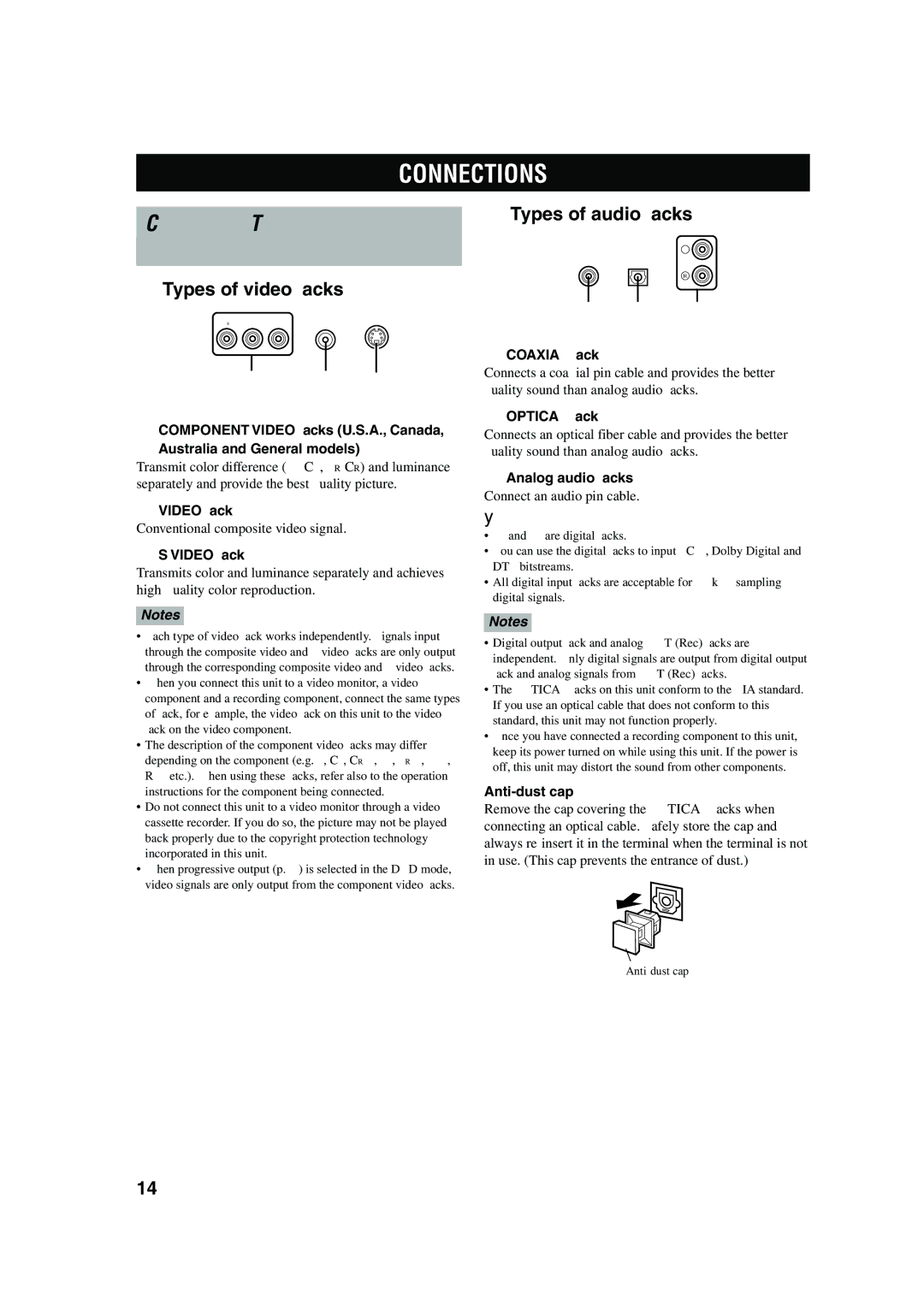
CONNECTIONS
Connecting TV and audio/video
components
■Types of video jacks
PRPBY
12 3
1 COMPONENT VIDEO jacks (U.S.A., Canada, Australia and General models)
Transmit color difference (PB/CB, PR/CR) and luminance separately and provide the best quality picture.
2VIDEO jack
Conventional composite video signal.
3S VIDEO jack
Transmits color and luminance separately and achieves
Notes
•Each type of video jack works independently. Signals input through the composite video and S video jacks are only output through the corresponding composite video and S video jacks.
•When you connect this unit to a video monitor, a video component and a recording component, connect the same types of jack, for example, the video jack on this unit to the video jack on the video component.
•The description of the component video jacks may differ depending on the component (e.g. Y, CB, CR/Y, PB, PR/Y,
•Do not connect this unit to a video monitor through a video cassette recorder. If you do so, the picture may not be played back properly due to the copyright protection technology incorporated in this unit.
•When progressive output (p.38) is selected in the DVD mode, video signals are only output from the component video jacks.
■Types of audio jacks
L
R
1 2 3
1COAXIAL jack
Connects a coaxial pin cable and provides the better quality sound than analog audio jacks.
2OPTICAL jack
Connects an optical fiber cable and provides the better quality sound than analog audio jacks.
3Analog audio jacks
Connect an audio pin cable.
y
•1 and 2 are digital jacks.
•You can use the digital jacks to input PCM, Dolby Digital and DTS bitstreams.
•All digital input jacks are acceptable for
Notes
•Digital output jack and analog OUT (Rec) jacks are independent. Only digital signals are output from digital output jack and analog signals from OUT (Rec) jacks.
•The OPTICAL jacks on this unit conform to the EIA standard. If you use an optical cable that does not conform to this standard, this unit may not function properly.
•Once you have connected a recording component to this unit, keep its power turned on while using this unit. If the power is off, this unit may distort the sound from other components.
Anti-dust cap
Remove the cap covering the OPTICAL jacks when connecting an optical cable. Safely store the cap and always
14
